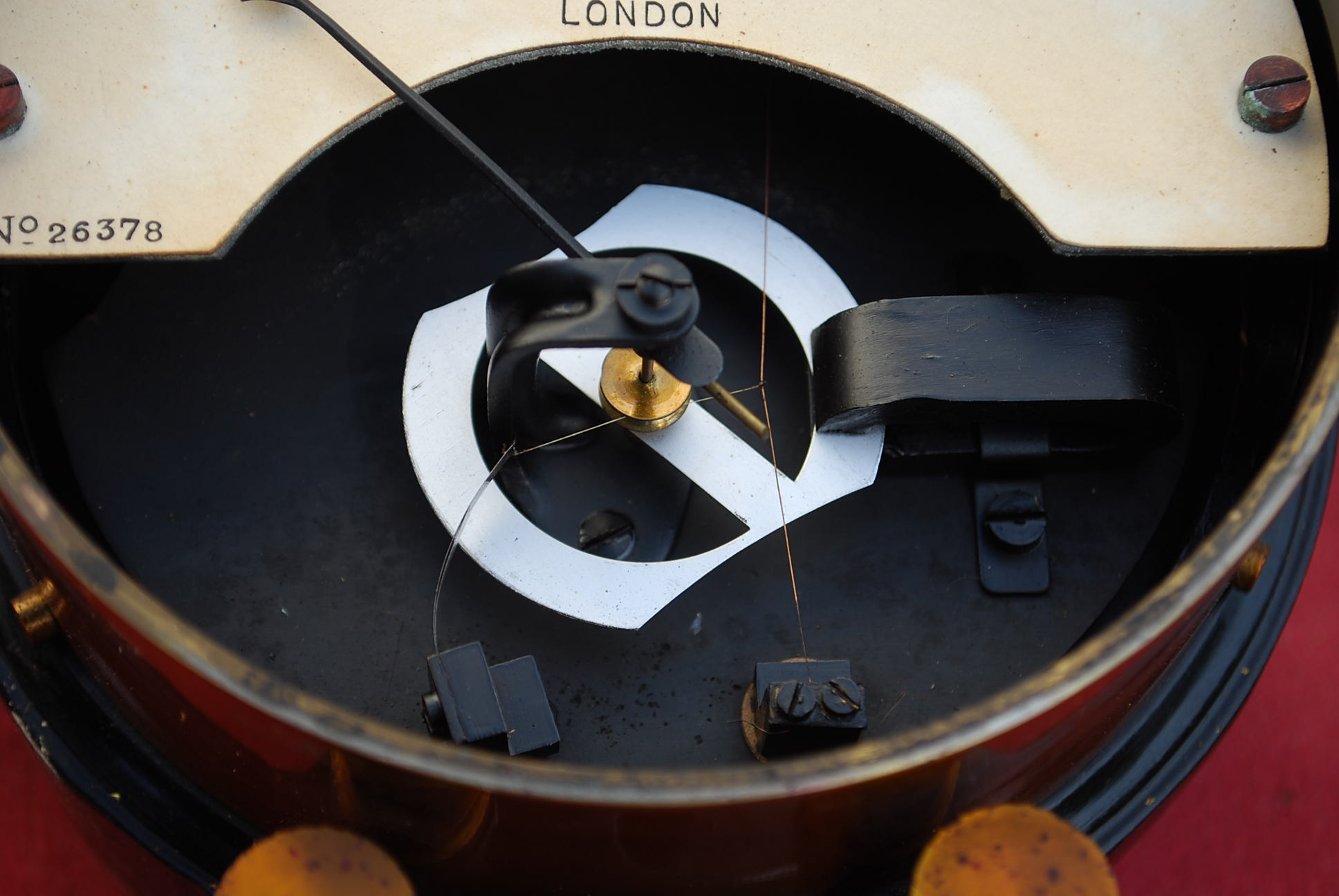An Ammeter built by Johnson & Phillips Ltd in 1903. It is not an electromagnetic instrument (with a moving coil or magnet), but a thermal type! It is based on the expansion of a thin wire that gets hot when current flows through it, and it is linked mechanically with the pointer. It is dead accurate with both resistive and inductive loads with a 30 Amperes full scale non linear deflection. An extremely robust, luxury construction, made of varnished copper and thick beveled glass. The shunt resistor is hidden behind the instrument, and the terminal connections are round hand tightened nuts. Inside the instrument there is a magnet for unknown reasons. Does anybody know what the horseshoe magnet is doing at the right hand side of the ammeter?
Ενα Αμπερόμετρο υψηλής ακριβείας κατασκευασμένο από την εταιρεία Johnson & Phillips Ltd το 1903. Δεν είναι ηλεκτρομαγνητικό όργανο (με πηνείο ή μαγνήτη), αλλά θερμικό, με λεπτό σύρμα, που καθώς ζεσταίνεται όταν διαρρέεται από ρεύμα, διαστέλεται και κινεί την βελόνα. Η ένδειξη είναι σωστή ανεξαρτήτως φορτίου. Δεν καταλαβαίνει την διαφορά μεταξύ επαγωγικών ή ωμικών φορτίων, η δε κλίμακα δεν είναι γραμμική. Μέσα στο όργανο υπάρχει ένας πεταλοειδής μαγνήτης για ανεξήγητο λόγο.
Johnson & Phillips Ltd. Charlton, London S.E.7. Main business with telephone and telegraph equipment for ships, also as label in ~WWI area made Mark III short wave tuner known. Founded in 1875 and located in Charlton, south-east London, not far from the hub of the cable industry in Greenwich, the company offered: “Complete equipments of cable machinery, accessories and stores for cable laying and repairing steamers.”
Dear George: Thanks for the excellent photo of your hot-wire ammeter!
I hadn’t seen a specimen of this type before, but I find mentions of the design (credited to Hartmann & Braun and made in the UK by J&P) in a number of early 20th century trade publications, so it must date to that period or a little earlier. Here’s a reference in a 1903 book which appears to show the exact instrument:
https://books.google.com/books?id=gMRPAAAAMAAJ&pg=PA137
If copyright restrictions prevent you from seeing that page, let me know and I’ll extract it as a PDF for you.
Best regards,
Bill Burns


